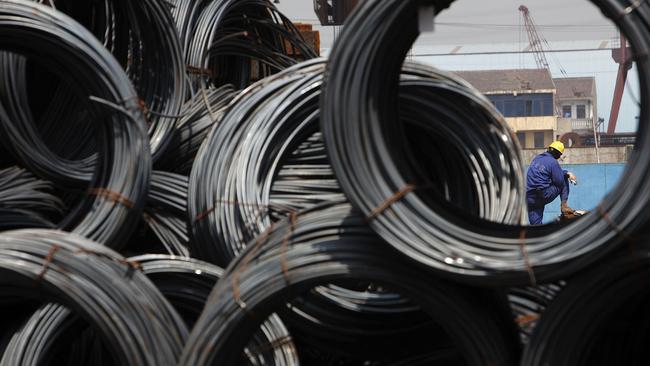Prices ease but iron ore miners awash with cash
Australian iron ore miners are still wildly profitable at current prices and China doesn’t have many good alternatives.

Despite some hand-wringing about the latest bear market in iron ore prices, Australian miners are holding up remarkably well, probably because they’re still wildly profitable at current prices and China doesn’t have many good alternatives to Australia’s high grade ore.
The high profitability of the iron ore miners and the massive dividend yields some of them will be paying in the August reporting period is worth remembering as the Australian share market goes through the seasonally weak May-June period amid profit taking and tax-loss selling before the financial year end and as the iron ore price potentially falls a bit more.
July is typically the best month of the year for the S&P/ASX 200 index as fund managers put money to work for the new financial year, and while August and September are typically weak months, the iron ore miners are likely to be highly sought after for their dividends.
Bell Potter’s Richard Coppleson predicts Fortescue shares will take out the record high of $26.40 sometime in the next few months – implying a share price rise of more than 19 per cent – because “too many retail investors will be buying it purely for dividend alone”.
After marking-to-market the iron ore price for the June quarter up to May 10, Bell Potter estimated an average price of $US179 a tonne for the June half year, which flowed through to a fully-franked second half dividend of $2.57 a share at Fortescue.
By itself that’s a monster 11.5 per cent dividend yield or 15 per cent fully franked.
The full year dividend of $4.04 a share works out at 18 per cent or 24 per cent fully franked.
Fortescue shares surged 5 per cent to $22.27 on Thursday.
Singapore iron ore futures bounced 6.7 per cent to $US183.90 a tonne following a 5.7 per cent drop to a five-week low of $US172.40 a day earlier, albeit in thin trading due to the public holiday.
Still, with iron ore futures having fallen 24 per cent from a record high close of $US227.34 two weeks ago as China cracked down on “speculation” and “hoarding” amid concern that surging commodity prices are stoking inflation – the iron ore price is now in a “bear market” and China could manage to push it lower in the short term.
Morgan Stanley cautions that iron ore is “past peak demand”.
“China’s record steel output in April has been fuelled by record scrap use, underpinning the country’s appetite for iron units but also indicating that iron ore demand might be past its peak,” says the US investment bank’s commodity strategist Susan Bates.
“We think that scrap’s green credentials will help to further expand its role in China’s steel industry.”
Moreover, the market “underappreciates the growing role of steel scrap in China’s steel production”, and it’s a “significant and structural risk to the seaborne iron ore market”.
To put the impact of China’s increased scrap use in perspective, on a full-year basis she estimates that every 1 per cent increase in China’s scrap share eliminates 18 million tonnes per annum of iron ore demand – roughly the capacity of a medium-sized iron ore mine.
Her demand projections assume China’s steel scrap share gradually rises to 27 per cent by 2025, replacing 130 million tonnes per annum of iron ore demand versus 2020 levels.
If China were to reach its 30 per cent target, another 50 million tonnes of iron ore demand would be eliminated by 2025.
“We believe this would mostly put lower grade iron ore imports from Australia at risk,” she says.
She think’s China’s rising scrap consumption will be mostly facilitated by rising domestic supply – in line with China’s realistic domestic scrap supply target of 300 million tonnes a year by 2025.
That’s expected to see the resumption of China’s steel scrap imports make only a marginal contribution to its requirements.
In her view China’s steel scrap price dynamics “put the iron ore bubble in the spotlight”, because while scrap consumption outpaced iron ore demand growth, the iron ore price has outperformed wider steel scrap prices.
Looking at the scrap-to-iron price ratio, which stands at 3.1 times versus a long-run average of 3.8 times, she argues iron ore’s supply side “remains constrained, but there is also no excess steel scrap floating around in China given anecdotal comments of falling scrap inventories at mills”.
“A key difference is that there is no listed scrap futures contract in China yet, keeping its scrap market free from the type of speculative trading activity that the iron ore market is exposed to,” Bates says. “Although the wider ferrous complex in China is currently retreating from its recent highs, iron ore still remains overvalued versus scrap.”
At the current China steel scrap price of $US583 a tonne and the long-run multiple of 3.8 times, the iron ore price would come in at a “fair value” of $US154 a tonne.






To join the conversation, please log in. Don't have an account? Register
Join the conversation, you are commenting as Logout